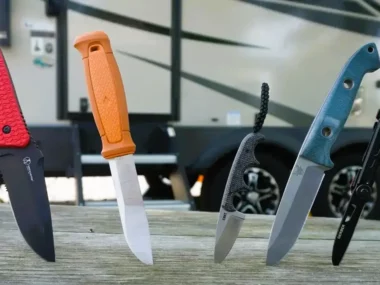Electric skateboards have surged in popularity the past decade thanks to lithium battery advancements providing boosted speed and range. But traditional human-powered boards still possess their own advantages. Comparing Electric Skateboards vs. Traditional Skateboards, In this comprehensive comparison, we’ll analyze the pros and cons of both e-boards and standard decks to help you decide which best fits your needs and budget.
By the end, you’ll understand the performance differences and be equipped to select either an electrified or traditional board as your rolling ride of choice!
Table of Contents
Convenience & Speed
Electric skateboards offer unmatched convenience by providing motorized momentum minus the pushing effort. Once stepping on an e-board you simply adjust speed using a handheld throttle rather than constantly kicking. This yields several advantages:
- No Pushing Exertion – Cruising along without physical work is less tiring allowing longer distance rides. Whereas constant pushing on a standard deck quickly fatigues your back leg.
- Higher Top Speed – Electric motors enable accelerating to 15-26 mph depending on the board and motor power. Traditional boards top out at 15mph for only very experienced long distance push skaters.
- Hill Climbing – Electric power conquers steep hills that would require constant downhill style push skating to climb on a standard board. Motored wheels makegrades Irrelevant.
- Braking Control – Electric brakes gradually slow the board predictable on descents versus having to slide your shoes on standard boards. Less speed wobbles!
So for riders prioritizing convenience, speed and accessibility over skill development, electric boards excel. Though the technology does not come free of charge…
Cost
There is no getting around the fact that quality electric skateboards carry a steep price tag. Batteries, electronics and onboard computers drastically increase costs over traditional wood decks with basic trucks and wheels. Here’s a general e-skate price comparison:
- Electric Skateboards – $400-$2000+
- Traditional Skateboards – $80-$300
Consider how the most advanced Boosted and Evolve boards run $1500+ while even entry-level electrics still run $400+. Comparatively quality standard decks from brands like Arbor or Landyachtz only cost $120-$200.
Clearly those wanting reliable electrified acceleration and braking must pay a premium. If budget is no concern, e-boards provide an unmatched convenient experience.
-

Magnis nam penatibus -

Pede nascetur eros -

Sit dis sed ante
Skill Building
While electric models provide added accessibility, they do detract from developing fundamental skateboarding techniques that traditional boards instill.
- No Push Kick Technique – The lack of pushing denies building balance skills and proper front foot positioning over the deck bolts that generate efficient power transfer through your feet to the wheels. Proper weight distribution across both feet is also neglected.
- Degraded Board Feel – Electric systems absorb road vibrations and diminish subtle feedback transmitted through quality wheels, bushings and trucks that train your proprioceptive balance on traditional setups.
- No Slide Braking Skill – Electric brakes remove the need to develop speed checking skills like foot braking or shutdown slides essential for control on downhill runs. Electrics brake automatically.
So for aspiring skaters hoping to progress fundamental techniques that translate to other board sports like surfing or snowboarding, standard longboards remain optimal. The skills gaps left by e-boards are substantial.
Maintenance
While electrified systems provide added convenience, they also introduce vulnerabilities requiring more frequent maintenance to uphold compared to traditional boards. Standard decks are basically indestructible slabs of wood that require little care. E-boards have more maintenance needs like:
- Battery Care – Lithium pack must sustain proper charge levels when not riding, avoid overheating, and has a limited lifespan.
- Electrical – Cabling, motor connections and remotes may eventually fail or disconnect needing repair.
- Enclosure Sealing – Gaskets and water sealing requires inspection to avoid electronics shorting.
- Belt/Gear Tension – Mechanical drivetrains stretch and wear over time requiring tightening or replacement.
So be prepared to inspect electrical connections, battery health, belt tension and enclosure seals to uphold waterproofing and prevent rode-ending electrical failures.
Versatility
Longboard decks were spawned decades ago from surfers adapting wheeled platforms to replicate wave riding sensations on land. This ancestry means traditional longboard designs excel at emulating surf-style maneuvers like deep carves, slides and tight turns. Plus basic shapes allow customization with any truck or wheel type for different riding disciplines.
Comparatively, electric skateboards position heavy battery enclosures and electronics low on the deck restricting mount options and flex. While the power adds thrilling torque for gravel paths and trails, traditional shapes carve asphalt with far more versatility.
Bottom Line
In the choice between electric versus standard skateboards, neither is universally “better” than the other. Each option shines regarding specific advantages. Electrified boards provide unprecedented convenience, acceleration and braking control. But they come at a premium cost while impeding fundamental skill development that traditional longboards ingrain through raw board feel and pushing reliance.
I personally keep both an electric Trampa mountain board for kicking back at high speeds and also ride a flexible Loaded Bhangra setup for low-effort surf training and commuting. This gives me the best of both worlds! Determine what performance traits matter most – convenience or skill progression – and pick the type of deck aligning closest. Hopefully these comparisons give clarity so you can confidently choose either a tech-packed e-board built for easy speed or a traditional skateboard for mastering lifelong balance techniques.
Let me know if you have any other electric versus standard skateboard questions!
Md Ismail Hossen
- is a Professional & Trusted Outdoor Authority, provides a valuable insights & tips on Products.









